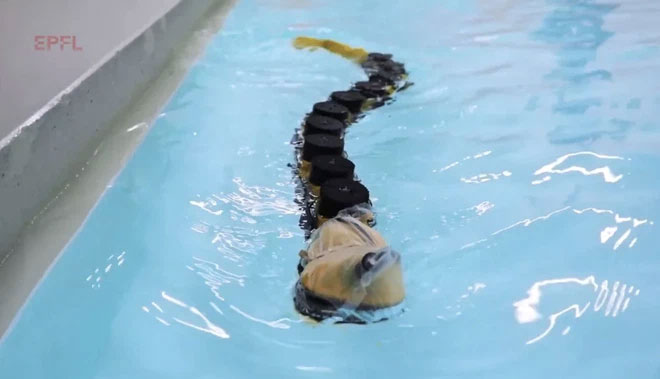Approximately 400 million years ago, a jawless parasitic fish was sucking the blood of its host, unaware that in a distant future, its evolutionary relatives would inspire scientists to create a robot modeled after it.
The robot is AgnathaX, as shown in the image below.

Fortunately, blood-sucking is not part of this robot’s program. Kamilo Melo, CEO of the meteorological company KM-RoBoTa and a researcher at the Swiss Federal Institute of Technology in Lausanne, stated that this robot is designed to study the spinal cord and peripheral nervous system of the lamprey fish.

Lamprey fish.
Kamilo mentioned that these creatures can teach us a lot about ourselves, as their spinal cord and peripheral nervous system share similarities with those of humans, largely unchanged over hundreds of millions of years of evolution.
The research team indicated that their swimming robot has contributed new information to neuroscience regarding how the central and peripheral nervous systems interact to coordinate movement.
Swimming robot inspired by ancient blood-sucking parasite
The research team has observed how the robot can swim using external sensors (simulating the peripheral nervous system in lampreys) that allow the robot to sense water and adjust accordingly to maintain a wave-like swimming motion.
Observing this robot has enabled scientists to study aspects such as spinal cord injuries without harming any lampreys in the process.
Kamilo revealed that the next steps for this project may involve efforts to control the robot and test its swimming capabilities in turbulent waters. This research could provide insights into the development of swimming robots in the future, particularly in the field of ocean exploration, as well as potentially supporting human health research.


















































